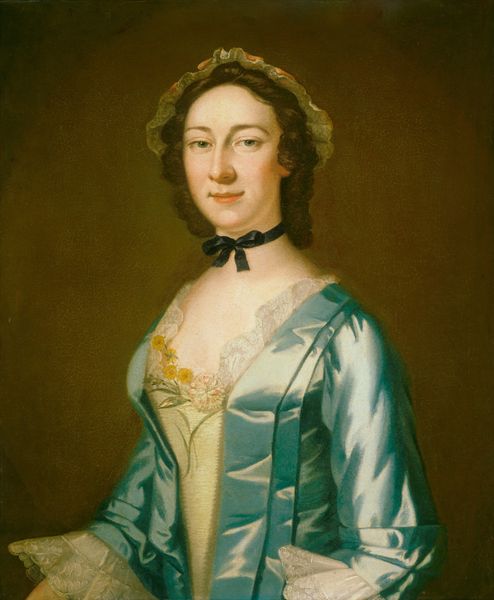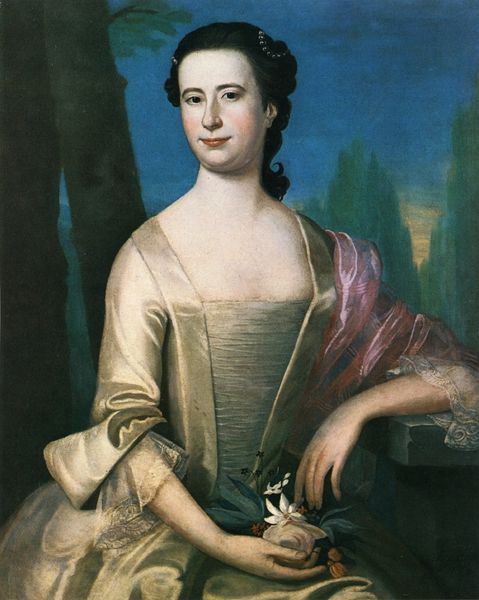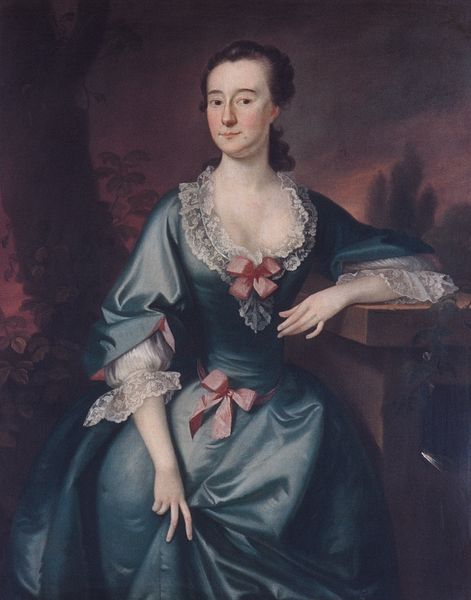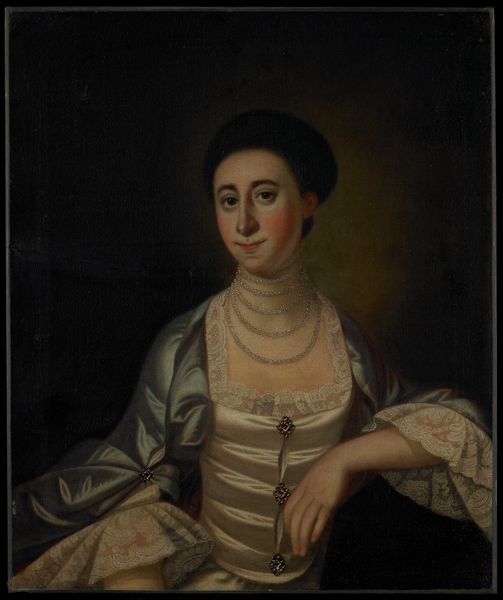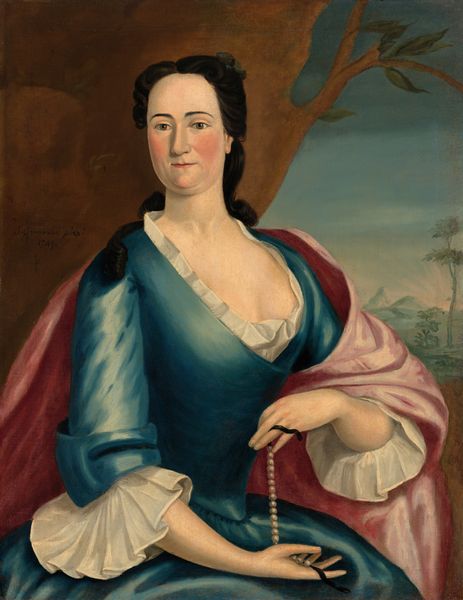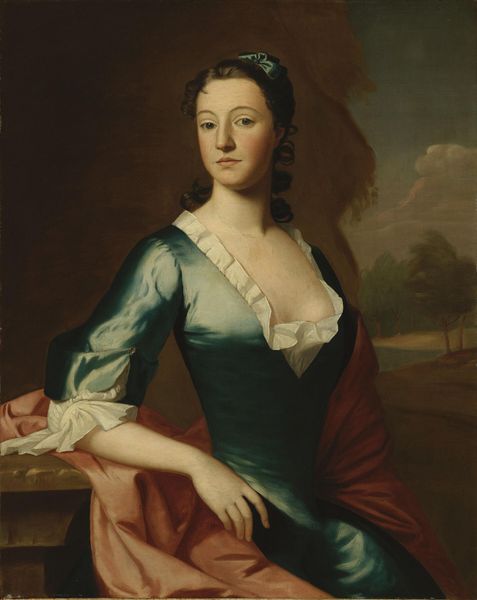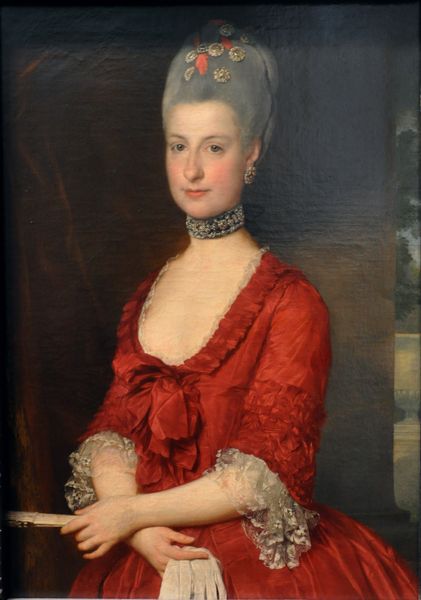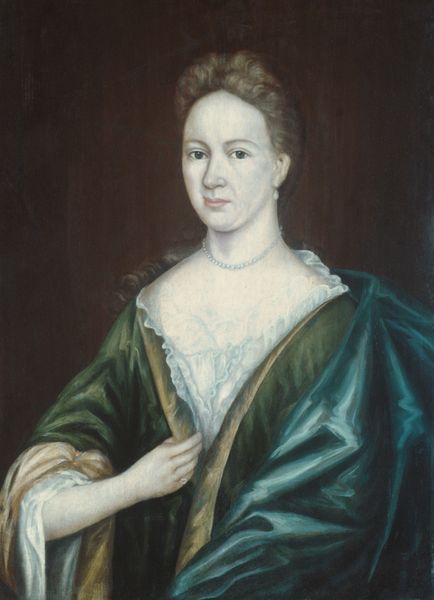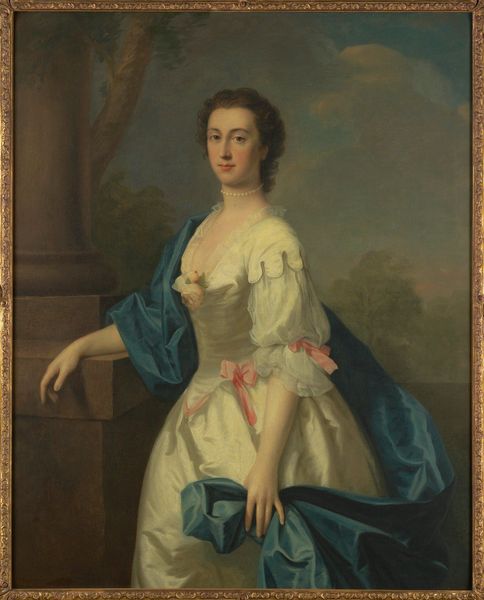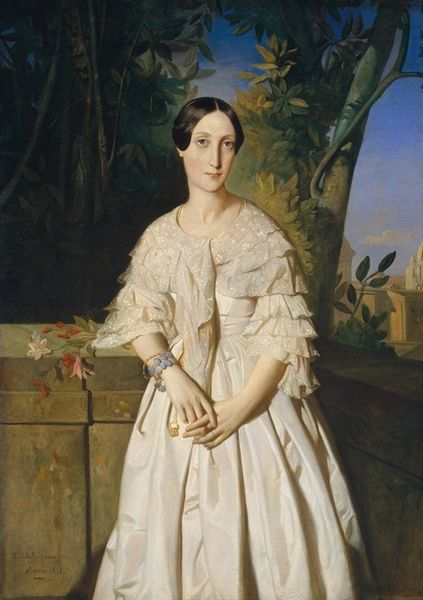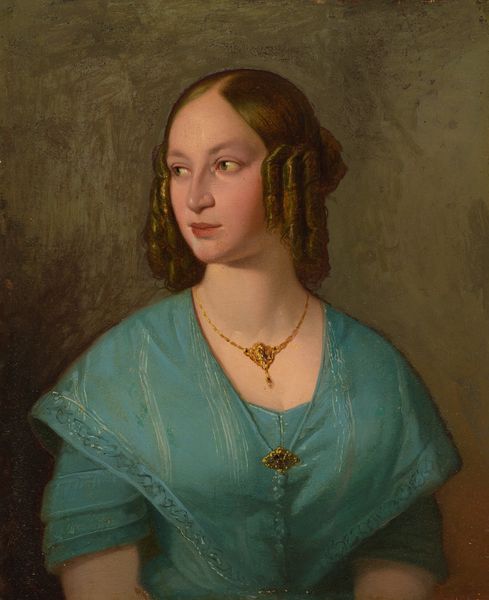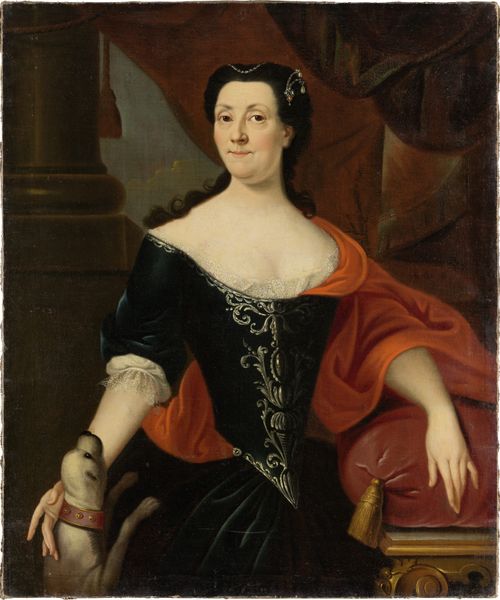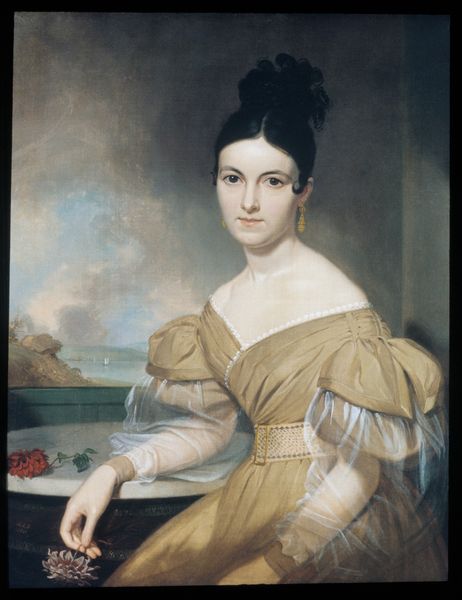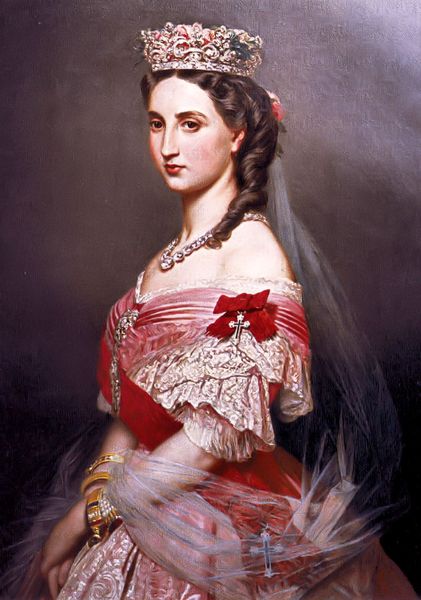
painting, oil-paint
#
portrait
#
portrait
#
painting
#
oil-paint
#
figuration
#
academic-art
#
rococo
Dimensions: overall: 91.6 x 71 cm (36 1/16 x 27 15/16 in.) framed: 108 x 88.3 x 5.7 cm (42 1/2 x 34 3/4 x 2 1/4 in.)
Copyright: National Gallery of Art: CC0 1.0
Curator: Standing before us is "Portrait of a Lady," an oil painting crafted around 1730 to 1735 by Joseph Highmore. What's your immediate take? Editor: The textures! That gleaming silk dress against the dark, almost velvety curtain. There’s a real attention to the way fabrics reflect light; it’s a study in materials. Curator: Absolutely, Highmore’s detail gives an intimate glimpse into 18th-century femininity. The sitter’s clothing whispers of status, and I am interested in the ways fashion was intertwined with social performance for women during this era. What's the labour context of such refined silk? Who benefits and who is exploited in its production and trade? Editor: It’s interesting you bring up labour. Highmore himself was aware of the production chain: think about the process of creating such detail, layer by layer in oil. Consider the pigments he used; some of those colors, like the blues in the background landscape, would have been incredibly costly, extracted from materials like lapis lazuli. Curator: Precisely, so a material tells a story! And the portrait is more than simply the depiction of a lady of status. She holds small, white flowers. We could look at how flowers served as both symbols and commodities. Also her lace bonnet and flowers challenge the artifical hair-styles that where trending at that period of time among the British high society. The unartificial head style may imply virtues like simplicity and humility? Editor: And that placement, just off-center—that’s deliberate. It makes you focus on her hand holding flowers. But let's not forget about her social positioning. Consider the societal forces influencing ideas and material reality of the artwork? Was she truly at ease, or was her presentation performative? The canvas itself carries the weight of her social expectations, does it not? Curator: Indeed, thinking about the sitter’s interior world juxtaposed with these tangible aspects—her pose, clothes, etc.—creates an intersection where social pressures of the time meet individual representation, and that’s quite potent. It invites reflection. Editor: Very true, the canvas and her gilded fabric represent so many invisible threads and hands who allow such high art to be realized. The surface shines with her affluence, while we begin to question the price she - and others - may have paid for it.
Comments
No comments
Be the first to comment and join the conversation on the ultimate creative platform.
